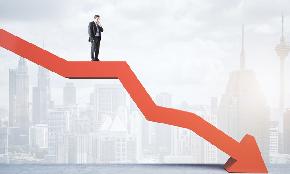WASHINGTON, DC-The confidence level of overseas investors has gotten a boost in the past six months, according to the first-ever mid-year survey from the Association of Foreign Investors in Real Estate. More than two-thirds of respondents to the survey, conducted among the association’s nearly 200 members and released on Wednesday, say they plan to invest some debt or equity in US real estate before 2009 is over, although about 75% have not yet done so this year.
Foreign real estate investors say they expect to see a recovery in the US real estate market by the end of the second quarter in 2010, the survey says. AFIRE chief executive James Fetgatter tells GlobeSt.com that expectation dovetails with investors’ outlook for the remainder of ’09.
“If they assume that the recovery will begin in the second quarter of next year, then logically they would start to start pooling their money this year,” especially if they want to get a jump on some attractive prices, Fetgatter says. “There is capital sitting on the sidelines–apparently quite a bit.” How much of that foreign capital will actually be spent in the US would be “speculation” at this point, though.
Certainly, a high-profile example of foreign capital coming back into US real estate was the acquisition earlier this month of AIG headquarters at 70 Pine St. and 72 Wall St. in Lower Manhattan by Korea-based Kumho Investment Bank. “Koreans have been looking around for the past year or so,” says Fetgatter. “As far as I know, this is the biggest acquisition that they’ve made.” He adds that a change in Korean law last year has made it easier for Koreans to take capital out of the country.
While Fetgatter says it’s too soon to say whether the 70 Pine deal will soon be followed by high-profile purchases from other nationalities, the sale illustrates a longstanding point. “When there’s capital that wants to go across borders, the US is the logical first place to look,” he says.
On the debt side, survey respondents say they expect to invest three times more than their current investment levels year-to-date. Equity investors expect to place seven times more than current YTD investments, the survey says.
The upswing in planned activity is coupled with a growing optimism in respondents’ investment projections. Thirty-one percent said they were more optimistic than at the beginning of the year; 16% said they were more pessimistic and 53% said they felt about the same as they did in January.
Investors’ ranking of the three cities they expect to recover first, and thus the top three markets for their investment dollars–Washington, DC, New York City and San Francisco–has not changed since AFIRE conducted its 2008 Annual Survey, released last January. However, their conviction has deepened over the past six months that the nation’s capital is the place to be. “Twice as many respondents named Washington as their city of choice over second-place New York,” Fetgatter says.
Rounding out the top five were Boston, which has not appeared among investors’ top five cities since 2001, and Los Angeles. Fetgatter suggests that one factor in Boston’s long absence was the disruption caused by the Big Dig, and that infrastructure mega-project’s completion may have given foreign investors an all-clear sign. However, he adds, “Boston has been in and out of the top five over the 15 years that we’ve been doing the survey. It’s a 24-hour city, a coastal city, which is what they like.”
Survey respondents also say that the office sector would recover first, followed by multifamily and industrial. This marks a shift in investor perception from the results of the January survey, in which respondents ranked multifamily over office buildings as the preferred property type. “They’re primarily office investors,” Fegatter explains. “Half their portfolio worldwide is office buildings. So that’s almost their default preference, except in times when they may perceive that it’s overpriced,” as may have been the case last year.
This year, they may sense that “there will be some discounting,” says Fetgatter. “If they have an opportunity to buy some really nice office buildings at a good price, they will do that, as opposed to multifamily.”





 Copyright © 2024 ALM Global, LLC. All Rights Reserved.
Copyright © 2024 ALM Global, LLC. All Rights Reserved.











